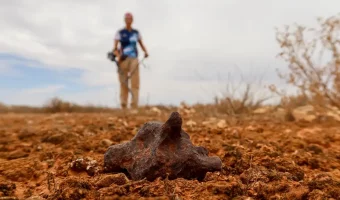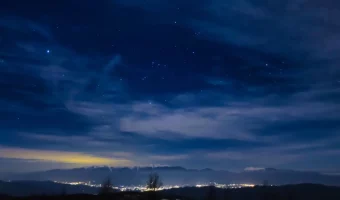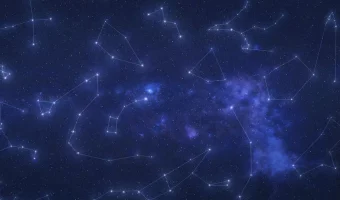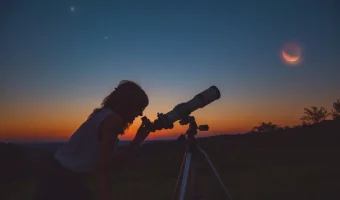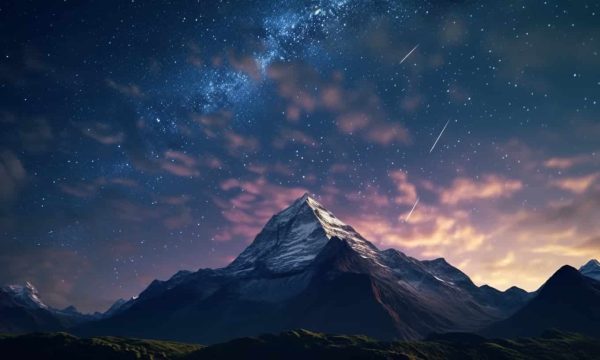
Annual Meteor Showers 101: Your Guide to the Year's Sky Shows
Last Updated: October 3, 2023
Picture a star, swiftly darting across the sky, leaving a streak of light in its wake – a mesmerizing sight, isn’t it? This spectacle, magnified countless times, forms the celestial firework we know as a meteor shower.
Many of us have had the fortune of witnessing these showers in person, while others have seen them in images or on screens. But how do we go about intentionally experiencing these breathtaking cosmic displays? When do these showers occur, and how can we best equip ourselves for viewing them?
This article is your starting point, a beginner’s guide to the marvels of the sky – our annual meteor showers.
Let’s embark on this stargazing journey together.
What are meteor showers?
Those distinctive streaks across the night sky are often known as shooting stars, but they are officially called meteors, with official groups of meteors called meteor showers.
Meteors occur when the Earth passes through debris along its orbit, usually left behind by comets and asteroids. The object impacts the atmosphere with incredible speed due to its own speed and the speed of the Earth’s orbit around the Sun. The object heats up as molecules of air are stacked up in front of the object, causing the chemical bonds of the molecules to break apart and form a hot plasma around the object. When one of our spacecraft returns from Earth, we call this process atmospheric re-entry, but it’s basically the same process on a much bigger scale with more precious cargo (sometimes astronauts!).
The majority of meteors are actually no bigger than a grain of sand. Particularly big ones are known as fireballs and if they are big enough to not be burned up completely by passing through the atmosphere and land on Earth, they are known as meteorites.
While stray meteors appear in our sky from time to time, there are many regular meteor showers that occur as our orbit takes us through the same debris field each year. Many of these debris fields are from known asteroids and comets in the solar system which follow predictable paths as long as they don’t interact with another object or a big enough object’s gravitational field.
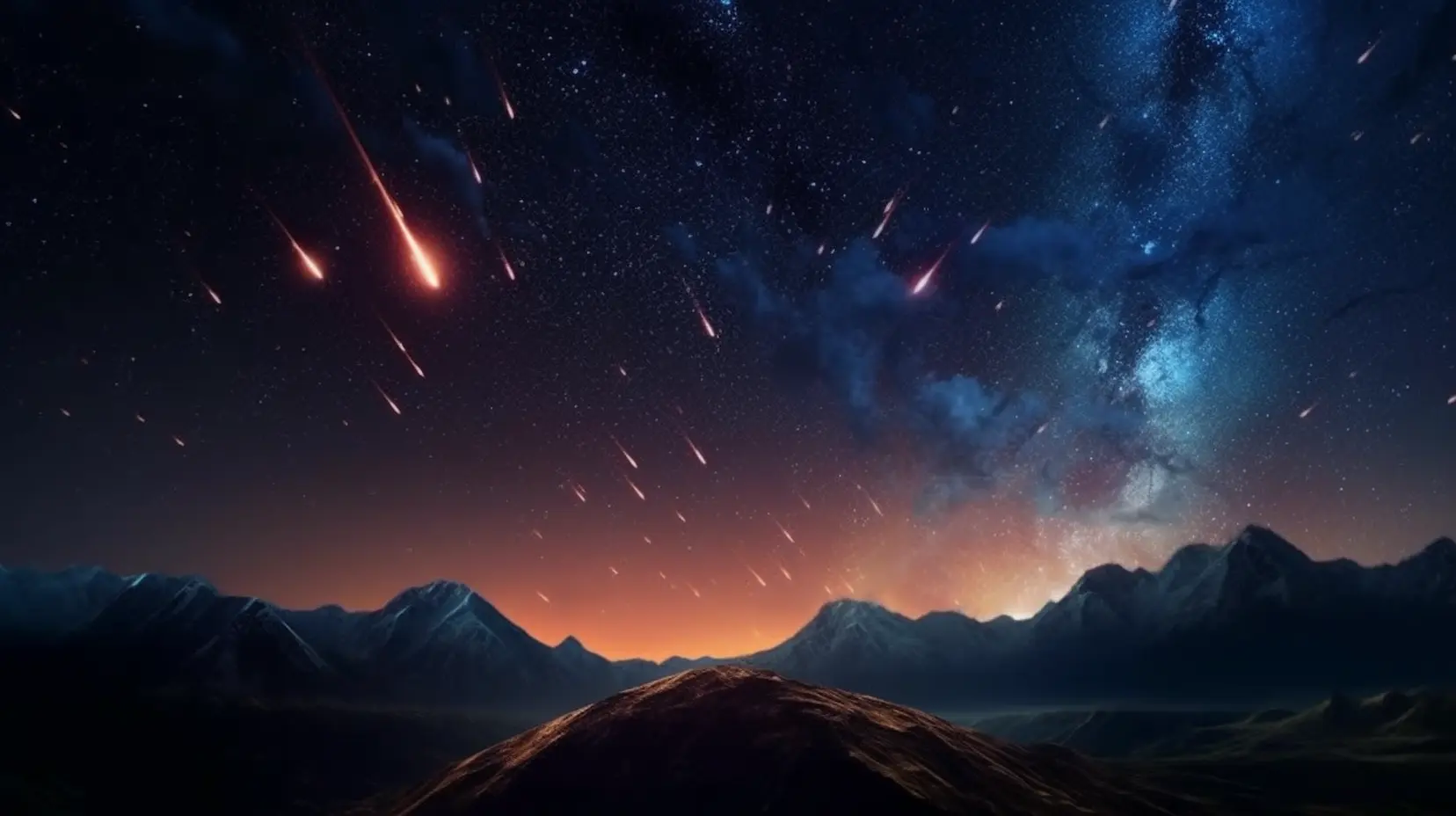
General meteor shower watching tips
There are 12 annual meteor showers a year, but they do not correlate to 1 a month so double-check dates if you are looking for a meteor shower in particular.
Meteor showers usually last for a few days or even up to a few weeks, but there are two days, known as the peak, in which there will be the most meteors or the highest chance of seeing one. So, if the weather is bad during the peak you can still typically see meteors in the days leading up to and after the peak.
Many of the tips for stargazing apply to watching meteor showers:
- Find a location that is far away from city lights to get the best show, though you may still catch a few inside a city, especially during the particularly big showers.
- A fuller moon will make it harder to spot meteors as the light from the moon will overpower smaller lights. So, plan for the day of the peak with the least amount of moon or to observe after it sets.
- The best time to view a meteor shower is typically in “predawn” hours which are between midnight and about an hour before dawn as this is typically the darkest time of the night. The second best time is typically in “late evening” meaning between 10 pm (22:00) and midnight (24:00). In general, later is better, but some have a decent chance of being visible throughout the night.
- You may want or need to travel to a rural location like going camping, but always look for a spot with a wide-open view of the sky free of obstructions like trees or buildings.
- Be sure to check the weather, not just for rain, but for clouds as you need a clear sky.
- Remember that your eyes will typically need about 20 minutes to adjust to the darkness. And if possible, consider using red lights on your flashlights, headlamps, and device settings to help maintain your night vision throughout the night.
- Plan for the weather and bring extra layers even during the summer.
Meteors will appear throughout the night sky but will appear to originate from a specific direction, often even a specific constellation, which they are typically named after. This point of origin is not because they are coming from that constellation, but because they are from a location much closer to us in that same area of our night sky. Look between this constellation and directly above your head (the zenith) to spot as many as possible.
Many but not all are associated with comets because our orbit passes through their trail of debris. This does not mean their associated comet is visible, as often it is far away while the debris sticks around.
Your naked eye is actually the best way to view meteor showers so leave the binoculars and telescopes at home unless you plan to look at other objects in detail as well.
Get cozy and enjoy! Meteor showers make for wonderful stargazing dates so be sure to share this moment with a loved one.
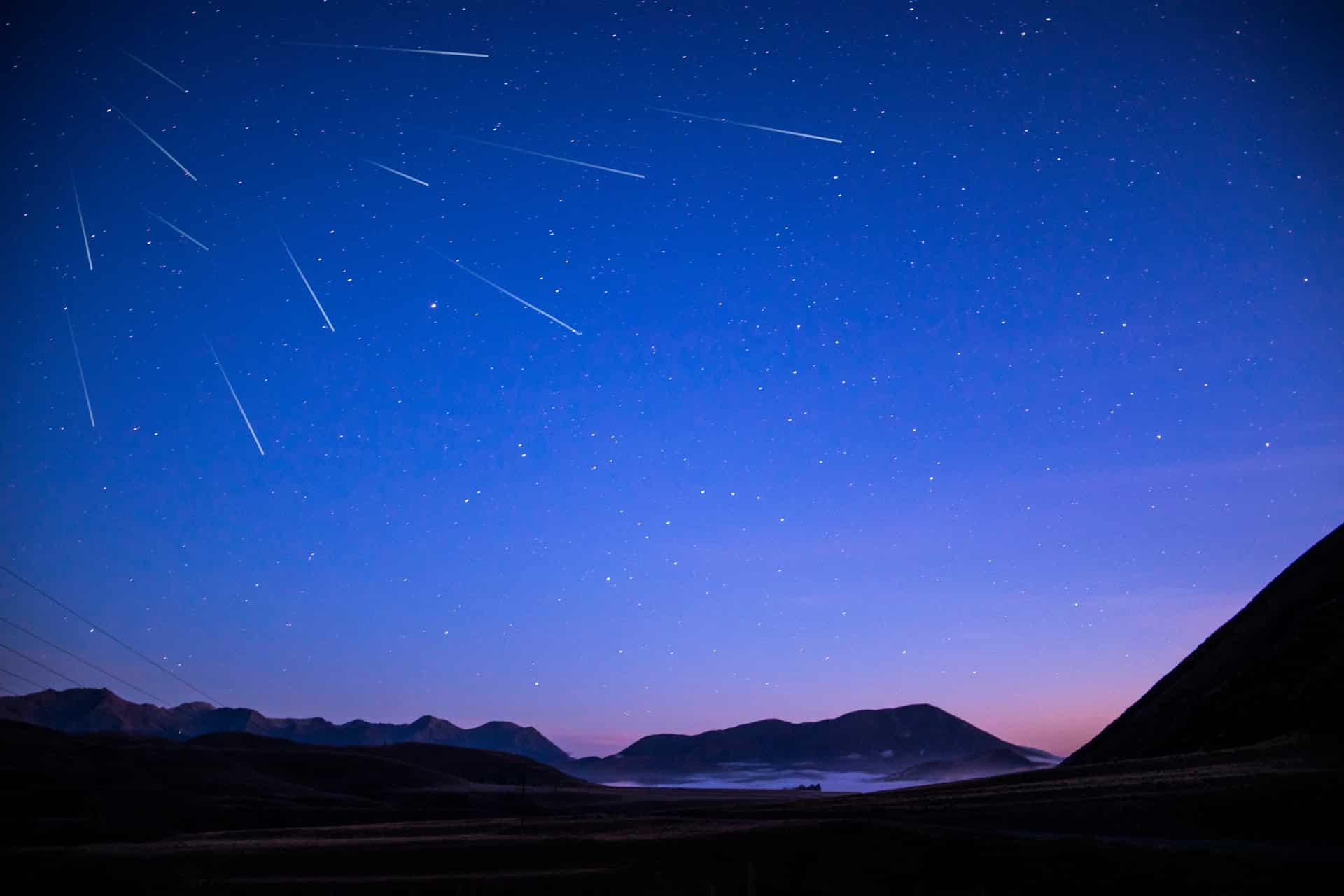
Annual Meteor Showers Calendar (dates & times)
There are 12 annual meteor showers. Below you can find some basic information about each of them.
Name of Shower | Date of Maximum | Point of Origin | Zenithal hourly rate (ZHR) | Associated Comet | Best Viewing Time |
Quadrantid | Early January (3-4 for 2023) | North | 25 | Predawn | |
Lyrid | Late April (21-22 for 2023) | South | 10 | Thatcher | Predawn |
Eta Aquarid | Early May (4-5 for 2023) | Southeast | 10 | Halley | Predawn |
Delta Aquarid | Late July (29-30 for 2023) | South | 10 | Predawn | |
Perseid | Mid-August (11–13 for 2023) | Northeast | 50 | Swift-Tuttle | Predawn |
Draconid | Mid-Oct. (8–10 for 2023) | Northwest | 6 | Giacobini-Zinner | Late evening |
Orionid | Late Oct. (20–21 for 2023) | South | 15 | Halley | Predawn |
Northern Taurid | Early to mid-Nov. (11–12 for 2023) | South | 3 | Encke | Late evening |
Leonid | Mid-Nov. (16–18 for 2023) | South | 10 | Tempel-Tuttle | Predawn |
Andromedid | Late Nov. (25–27 for 2023 | South | 5 | Biela | Late evening |
Geminid | Mid-Dec. (13–14 for 2023) | Northeast | 75 | All night | |
Ursid | Late Dec. (21–22 for 2023) | North | 5 | Tuttle | Predawn |
Further notes on some of these showers:
In the right conditions, the Quadrantids are one of the best meteor showers of the year even though the peak is quite short.
While the Lyrids are visible in both the Northern and Southern Hemispheres, it is much more active in the North because the point of origin is high in the sky. With only 10 meteors per hour at the peak in dark, clear skies, it is a fairly good meteor shower. However, rarely, the Lyrids produce many more, up to 100 meteors per hour.
The Eta Aquarids are best from the Southern Hemisphere as the point of origin is higher in the sky than in the North where they are often seen closer to the horizon. This shower is created from debris from the famous Halley’s Comet!
Taking their name from the constellation Aquarius, where they appear to originate from, the Delta Aquarids shower is typically weaker. They can be not as bright as some of the other annual meteor showers so plan for a really good location and clear dark sky in regard to weather to opimize your chances. Unfortunately, this year they will occur at the same time as a nearly full moon, so be prepared and keep your eyes peeled to spot one!
The Perseids meteor shower is one of the best meteor showers of the year, every year with over 50 meteors per hour during its peak. The 2023 shower peak will occur during a crescent phase at only 10% illuminated, making your chances of seeing more only better.
While the Draconids are not considered a big show, they mark the start of meteor season as we feature multiple showers for each month for the rest of the year meaning one every one to two weeks. The moon should also be on our side for this meteor shower providing little contrasting light for the second meteor shower in a row!
Knowing the point of origin for the Orionids shower is typically fairly easy, just find the Hunter, one of the most recognizeable constellations in the night sky This shower often features some of the brightest and fastest meteors, making for a wonderful show. They begin appearing in mid-October, and peak on October 21st in 2023, meaning you have plenty of time to spot a couple. Consider staying up late a few nights. The moon may be close to First Quarter, but it sets around midnight so if you shoot for Predawn hours, you should find a great show.
The Leonids are a fairly average storm normally, with 10-15 per hour. Rarely, it does produce “meteor storms” of thousands of shooting stars streaking across the sky. For 2023, we do not predict a meteor storm, unfortunately. However, the Moon will set before midnight, helping to increase your chances of a good show after it disappears.
Mid-December brings the Geminids, the biggest meteor shower of the year with 75 meteors per hour throughout the entire night at its peak since the constellation Gemini rises just an hour or two after sunset. This, combined with the fact December brings earlier sunsets means you won’t have to stay up as late to still see a fantastic show. To top it all off, the peak is near the new Moon, meaning 2023 is sure to be a great year for the king of annual meteor showers. Mark your calendars and consider planning a trip to a dark sky location near or on the peak to experience what’s predicted to be an even better show than normal.
The Ursids are a fairly difficult shower to spot with only 5 meteors per hour and only visible in the Northern Hemisphere since their point of origin is too far north in the Bears to be seen well in the Southern Hemisphere.
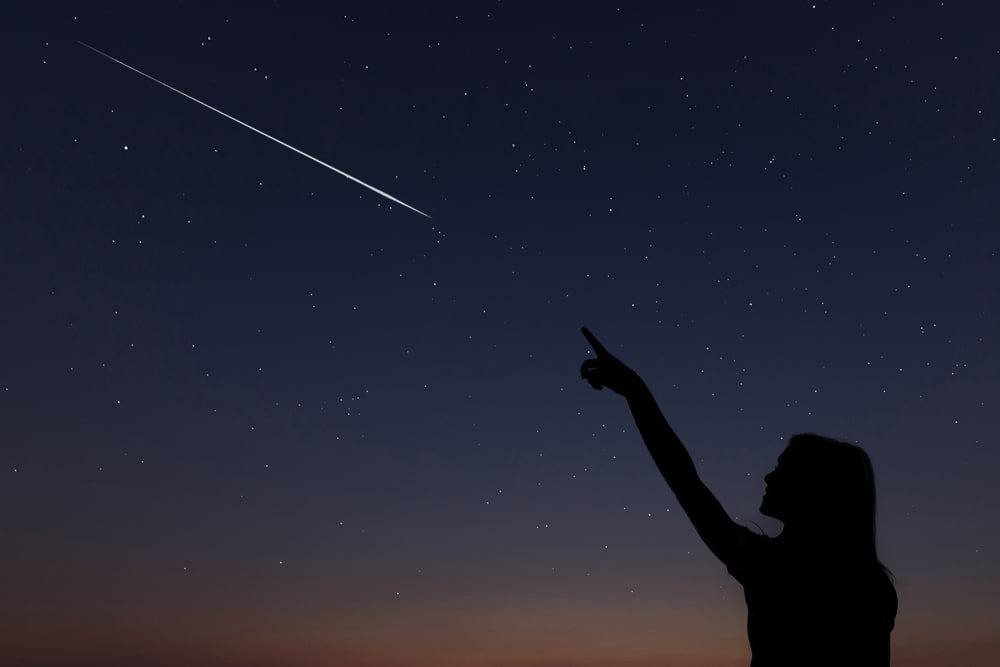
Conclusion
With their distinctive streaking lights across the night sky, meteor showers are one of the most popular regular night-sky-watching events. While there are a number of meteor showers that occur less frequently, there are 12 meteor showers that occur on an annual basis, with the most spectacular being the Geminids in mid-December, the Perseids in mid-August, the Quarantids in early January, and the Orionids in late October.
We hope that this introduction to the annual meteor showers has inspired you to put a few dates on the calendar for a meteor shower party at least once before the end of the year and many more for the years to come.

Sarah Hoffschwelle is a freelance writer who covers a combination of topics including astronomy, general science and STEM, self-development, art, and societal commentary. In the past, Sarah worked in educational nonprofits providing free-choice learning experiences for audiences ages 2-99. As a lifelong space nerd, she loves sharing the universe with others through her words. She currently writes on Medium at https://medium.com/@sarah-marie and authors self-help and children’s books.
Wow! There's more to read 🚀
This page is part of our collection of articles about stargazing. If you enjoyed the read, then you’ll love the following articles.
